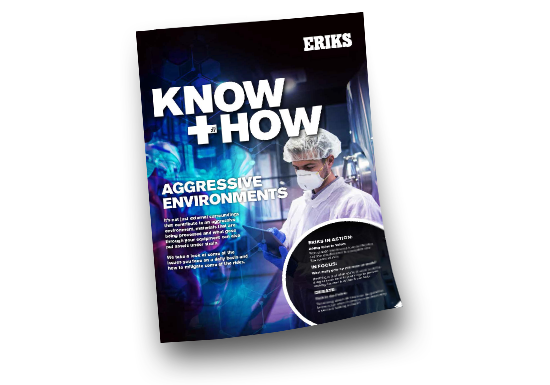In this article
Why a Preventative Maintenance Schedule Can Always be Relied on
The first task to achieve ‘No unplanned failures’ was to develop a strategic vision for reliability at the plant. Secondly, to develop an implementation plan. Lastly, to develop a reliability Best Practice document for their manufacturing group. The ultimate aims of this process would be to accelerate reliability-centred plant initiatives, mitigate risk exposure to critical spares gaps, increase productivity, obtain an insight into the assets’ status, and enable smarter replacement thanks to optimised monitoring.

With expertise in asset monitoring, asset maintenance and asset inventory management, ERIKS was the natural choice of partner to help.
Assessing your assets
It’s impossible to develop a reliability-centred strategy for your assets unless you know what assets you have, their relative criticality, and their failure modes. So ERIKS’ first step at the customers plant was to carry out an assessment of criticality and monitoring technology – initially a scope of 300 rotating assets. Ultimately, the survey expanded beyond rotating assets to a total of 700 different flow assets, heat exchangers, steam traps and valves. A stores survey was also carried out, and the surveyed assets were then cross-referenced with the stores inventory.
The asset survey not only recorded the asset nameplate details, but also assessed their individual operating environments. The plant runs a semi-hygienic, clean operation manufacturing process, and is a Tier 3 COMAH (Control Of Major Accident Hazards) site, with some explosive atmospheres present. Once the assets and their operating environments were defined, they could be ranked for criticality, based on their rating under five criteria:
- Safety - The effect of equipment failure on human safety
- Line Output - The effect of failure on the production process and productivity
- Maintainability - The length of time a particular failed asset takes to fix
- Cost - The effect of equipment failure on maintenance costs
- Product Quality - The effect an asset failure has on the quality of the products being produced
- Foresight and insight - With the assets and their criticality identified, ERIKS’ expertise came into play in understanding the failure modes of the critical assets, and in recommending solutions to mitigate against failure.
This included defining a maintenance strategy based on individual assets’ attributes and failure modes. Introducing a non-intrusive surveying and monitoring regime can help to reduce the mean-time between maintenance interventions, because maintenance takes place only when required, not to a fixed schedule.
With this Best Practice reliability strategy in place – combining preventative, proactive and predictive measures – managing asset risk, condition and lifecycle becomes easier and more efficient.
In addition, using ERIKS’ inventory management capabilities, once the repair and maintenance parts in the stores had been assessed it was possible to optimise the inventory and standardise it. ERIKS’ figures show that 10% of stores costs are tied up in obsolete items, and 15% of downtime is caused by a lack of spare parts.
Ultimately, the introduction of the reliability-centred maintenance strategy has enabled this speciality chemicals company to:
- Intervene smarter
- Mitigate risk
- Optimise productivity
- Decrease planned and unplanned downtime
Read the Complete Article: Know+How Magazine Issue 37 Aggressive Environments
Click here for more information on Asset Management, or contact your local ERIKS Service Centre, who will be happy to discuss your options with you.
#ERIKS #LetsMakeIndustryWorkBetter #AssetManagement #PreventativeMaintenance


